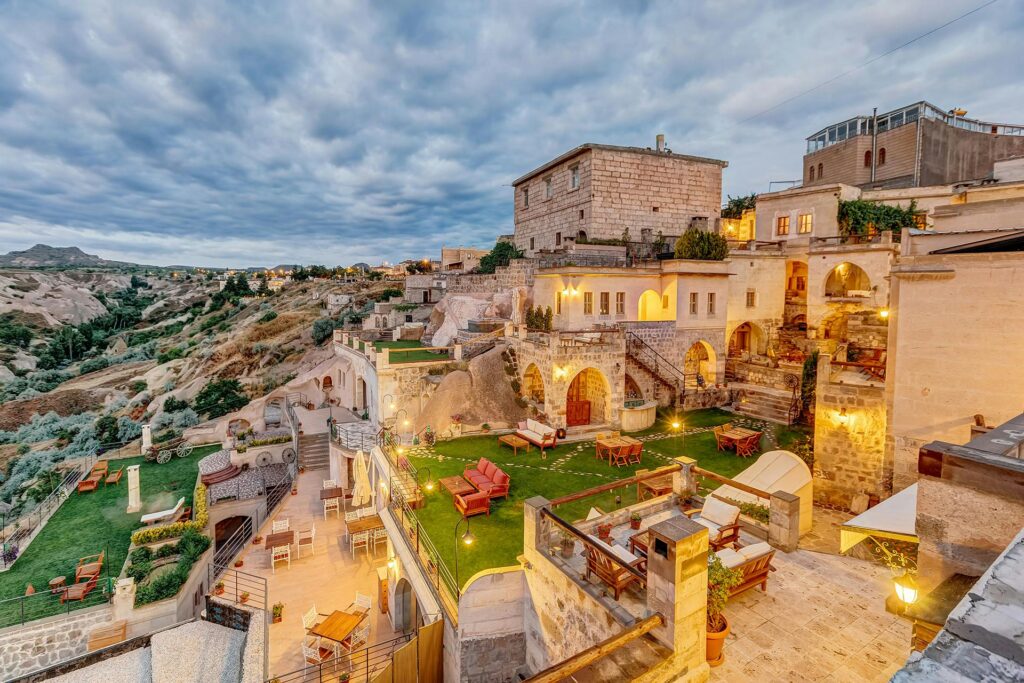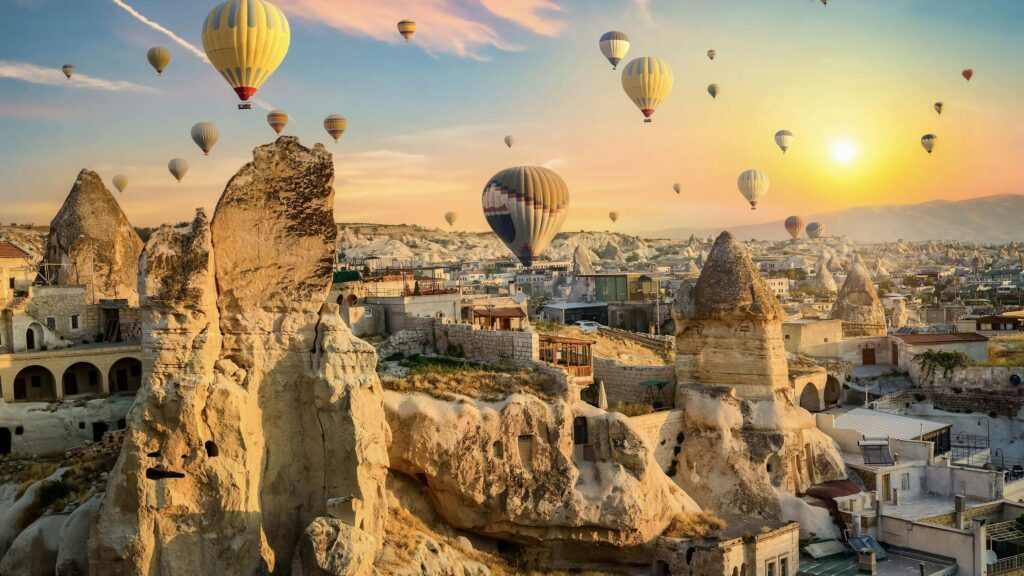UNEARTHING A HIDDEN WORLD
Imagine a regular day in 1963. In the heart of Turkey, a man is renovating his home in the Nevşehir Province. Suddenly, he knocks down a wall and stumbles upon a room — a mysterious, ancient room. He decides to dig further, unearthing an intricate network of tunnels leading to multiple cave-like chambers. What he discovered was not just a room, but the entrance to an entire city buried beneath the surface — the city of Derinkuyu in Cappadocia.

DEEP DOWN IN DERINKUYU
This was no ordinary city. Derinkuyu, one of dozens of underground cities in the Cappadocia region of central Anatolia, Turkey, is a labyrinthine world of human ingenuity. It houses an elaborate network of ventilation shafts, wells, and passageways. With eight floors that plunge to a depth of 280 feet, it’s the deepest of its kind.
The city was far from just a network of tunnels. It had everything a vibrant society would need — churches, food stores, livestock stalls, wine cellars, and schools. It was a fully-functioning city where life thrived underground, sheltered from the world above.

THE MARVELS OF CAPPADOCIA
To truly appreciate the engineering marvel that is Derinkuyu, one must understand the unique geological history of Cappadocia. A region rich in volcanic history, Cappadocia sits on a plateau approximately 3,300 feet tall, filled with domes and pyramids created by layers of ash deposited millions of years ago. This ash hardened into a soft, malleable rock — a perfect material for the ancient inhabitants to shape and form into these subterranean sanctuaries.
THE HITTITES: MASTER TUNNELERS
Now, you might be wondering, who could have possibly carved out this colossal sanctuary? The credit likely goes to the Hittites, an ancient civilization that emerged in the 15th century BC. They initially started by carving storage and food lockers into the soft rock, but soon realized they could create a more complex system of rooms and tunnels. This served a dual purpose: storage and protection against frequent Phrygian raids.

A BEACON OF BYZANTINE CHRISTIANITY
Picture a time when faith became a hazardous pursuit, when adherence to your religious beliefs was akin to playing with fire. This was the Byzantine era, a tumultuous period between 330 and 1461 CE. The burgeoning Christian faith fell under the scrutiny of the ruling Umayyad and Abbasid dynasties. Practicing Christianity wasn’t just difficult, it was dangerous.
In this precarious landscape, Derinkuyu offered a lifeline, a literal underground refuge for the devout. Tucked away beneath the earth, this subterranean city provided an opportunity to live out their faith in peace, albeit under the earth’s crust rather than under the sun. For these early Christians, this choice was not just preferable, it was essential for their survival.

But Derinkuyu was more than a survivalist bunker. Within the intricate network of caves and tunnels, the Christian community thrived, carving out more than just a life for themselves. They carved out a spiritual sanctuary, sculpting churches from the rock. These spaces were where faith could flourish away from the prying eyes above ground. These cavernous chapels, still marked today with the symbols of their devotion, were the stages for sacred services, the sound of hymns reverberating off the stony walls.
FORTRESS OF KNOWLEDGE
Further, the city became a fortress of learning, fostering Christian knowledge in the safety of its hidden rooms. Young minds were nurtured here, taught to read and write and introduced to the pillars of their faith amidst the quiet strength of the rocks around them. Derinkuyu was more than a refuge; it was a beacon of hope. It allowed a beleaguered community to preserve their culture and religion even as tensions simmered above ground.

Today, the remnants of Derinkuyu whisper tales of a resolute past, of a community that held onto its faith even under immense pressure. As one traverses its silent corridors, the echo of ancient prayers may be long gone, but the spirit of resilience and religious dedication persists. In the face of adversity, the early Christians of Derinkuyu didn’t just survive; they demonstrated the enduring power of faith, undeterred even when compelled to take it underground.
BEYOND SURVIVAL: LIFE UNDERGROUND

But the underground city was more than just a sanctuary — it was home. During times of peace, the caves served as cold storage facilities and livestock barns. In times of peril, the residents carried on their lives as usual — commerce thrived with communal meeting areas, dining rooms, grocers, even shopping spaces. The city was equipped with an underground river, wells for drinking water, and thousands of ventilation shafts to ensure a healthy living environment.
DERINKUYU TODAY: A GLIMPSE INTO THE PAST

Today, Derinkuyu serves as a historical testament to human adaptability. A mere 10% of the city is open to the public, but even that fraction allows visitors to marvel at this subterranean wonder. Each narrow passageway, each concealed entrance, each blackened tunnel echoes stories of a thriving society that once existed beneath the surface.
Derinkuyu reminds us of a time when communities had to burrow deep into the earth, transforming a network of tunnels into a city teeming with life. A time when, against all odds, 20,000 people found a way to thrive — deep down under.

 Additional Facts
Additional Facts
2500 BC
Human life in Cappadocia stretches far back into the mists of time, all the way to the Paleolithic Period. About 2500 to 2000 BC, the land was home to the Hatti culture, an ancient society that etched its existence into the rocky landscape. The Hittites appeared on the scene right after, ready to leave their own mark on this unique region. The Assyrians also found this land enchanting, establishing trading posts and fostering the early roots of commerce.
600 Churches
There are approximately 600+ churches and monasteries made of rock in the Cappadoccia area. Most of these churches are from the 10th and 11th centuries and some still have great frescoes. There are 200+ underground churches.
150 Balloons
There are over 150 balloons that fly simultaneously over Cappadocia every early morning. It’s a very magical experience.



